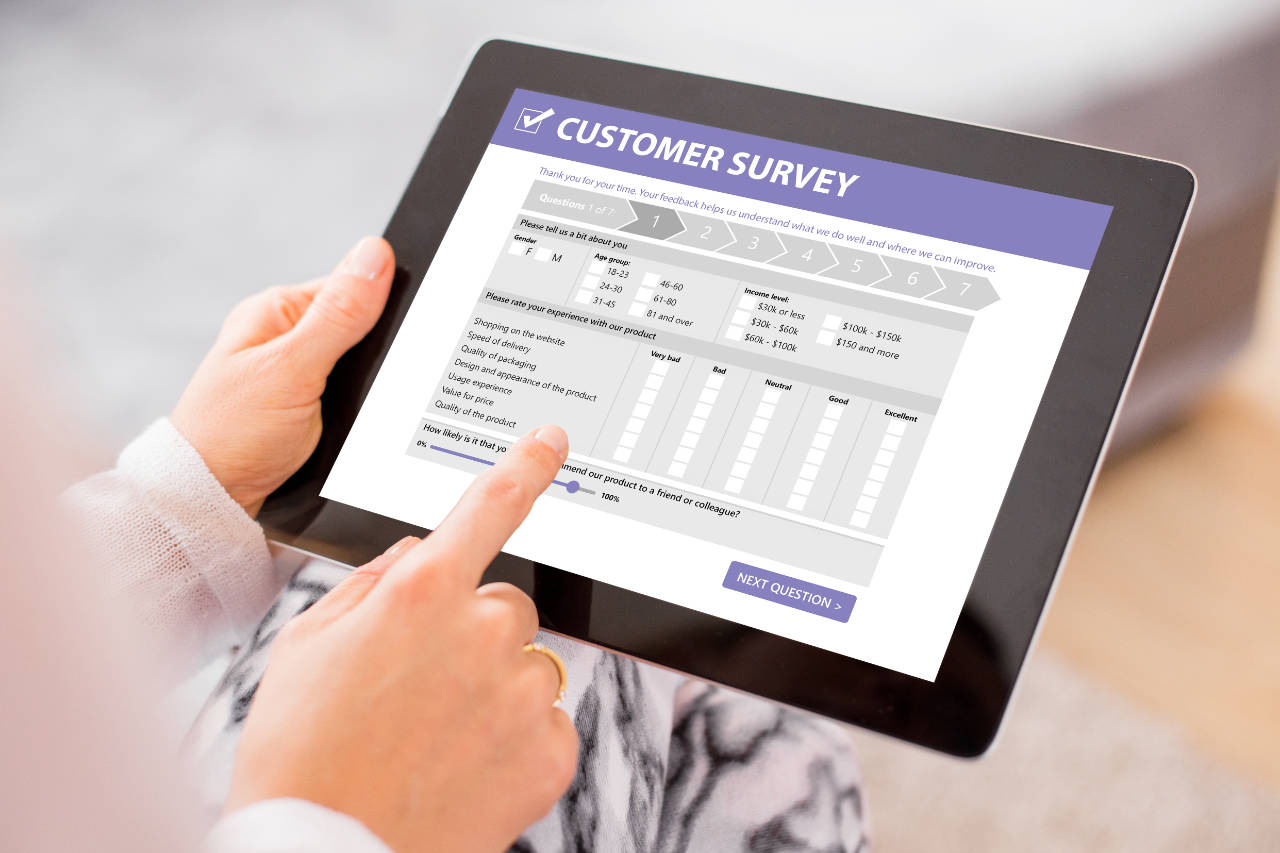To keep up in a fast-paced, competitive business environment, organizations need to focus on winning and retaining customers, and protecting profit margins. One way organizations can take the initiative is to prioritize quality management, ensuring products and services meet quality regulations and exceed customer expectations.
The ones who know the quality of your products and services the best are your customers—understanding how your customers feel, think and react to your products and services, and what they are expecting from them, is one of the keys to the future success of your business. Through customer feedback, you can identify ways to improve quality management throughout your organization, resulting in better business outcomes.
The American Society for Quality estimates that most U.S. organizations have quality-related costs between 10-15% of sales revenue. These costs could include preventative costs such as becoming ISO 9001 certified and implementing a Quality Management System (QMS).
Read on to discover the benefits of ISO 9001 and how it can transform how your organization utilizes customer feedback.

Why is Customer Feedback Important as Part of Your Quality Management System?
A QMS is based on principles and specifications designed to accurately measure how an organization’s products and services match customer expectations.
When establishing a QMS for your organization, you will need to consider how you can accurately quantify and monitor customer sentiment to know if your organization is successfully providing the quality your customers expect. One way you could do so is by collecting and analyzing customer feedback.
Customer feedback counts as primary research—insightful data coming directly from your clients that you have collected that indicates if your organization’s products, services, and customer services are fulfilling the needs of your customers.
Customer feedback can be both positive and negative. Positive customer feedback highlights where your efforts are paying dividends in your organization and will require consistent application of processes. In contrast, negative customer feedback may indicate where your organization requires more focus or where it can introduce improved processes.
Customer feedback offers up several other benefits, such as:
- Market opportunities—identifying customer-led gaps in the market.
- Improved customer advocacy—customer satisfaction may be boosted if they see active changes based on feedback.
- Customer trends—feedback can help determine patterns and trends in customer behavior your organization could leverage.
- Data-led decision-making—customer feedback allows your organization to make evidence-based decisions to improve quality.
- Customer retention—continuously improving products and services can help reduce customer churn.
How Does ISO 9001 Help Boost Customer Satisfaction?
ISO 9001 is the international standard for quality management, developed by the International Organization for Standardization—and is internationally recognized as a framework for improving and maintaining high-quality products and customer services. This standard provides organizations with a framework to implement a QMS. Applicable to businesses of all sizes and in all industries, ISO 9001 has a number of quality management principles that encourage continual improvements, including strong customer focus and top-level management involvement.
ISO 9001 can help ensure consistency across an organization’s products and services, increase operational efficiency, boost productivity, reduce cost through improved waste efficiencies, and lay the foundation for continuous improvement.
An ISO 9001-certified QMS helps organizations establish a systematic process for improving customer satisfaction and increasing customer centricity, including collecting customer feedback. This process is crucial in complying with all of ISO 9001’s Clauses, specifically Clause 9.1.2.
Clause 9.1.2 is a critical component of ISO 9001, outlining the necessity of top management in identifying customer expectations and ensuring that processes within the organization are focused on achieving customer satisfaction. This should be done by organizations systematically recording and measuring customer responses—such as feedback—and building strategies to meet customer expectations.
These strategies should include customer profiles outlining who the customers are, what they expect from an organization, and measuring and acting on customer feedback.
Download our free ISO 9001 checklist.

Measuring Customer Satisfaction
1. Use various customer feedback methods
You want to make it as easy as possible for your customers to give their feedback.
Data collection options, such as star ratings, email questionnaires, suggestion boards, social media comments, website pop-ups, and short-form surveys, can be used throughout the customer journey.
2. Analyzing customer complaints
Collecting customer feedback is not enough to encourage change—it needs to be thoroughly and systematically analyzed to gain maximum insight. By analyzing customer feedback, your organization could identify any problem areas that require additional focus and any trends or patterns in customer behavior that could inform future long-term strategies for the better.
3. Study the feedback on product returns
Customers may need to return a product to you for various reasons—faulty, no longer required, poor quality, or too confusing to use. By studying and quantifying the customer feedback you receive on returned products, you could identify which products are unsatisfactory, the most common reasons for returns, and where to focus improvement efforts.
4. Conduct focus groups
A focus group comprises a small number of customers who share similar demographics and traits or experiences and are also part of your target audience. Through a group interview led by someone from your organization, you could gain deep insight into what your target audience thinks of your products and services, what they want to see improved, and what suggestions they may have.

Understand ISO 9001 QMS’s key metrics and processes
Metrics and key performance indicators (KPIs) allow organizations to track progress and set realistic goals and should be set in all departments—including teams that directly impact quality through the supply chain, production, and distribution processes.
Within ISO 9001, the critical metric for a QMS is quality. Quality KPIs provide a comparable measure of the caliber of your products and services and the effectiveness of your production processes. High-quality products will be produced through efficient operations, ones with few issues or fewer products not fit for distribution.
KPIs aren’t limited to metrics such as manufacturing defects or waste. Customer feedback can be a value metric to measure. Customer-centric quality KPIs may include the number of products returned, customer complaints, questions asked to contact teams on product or service use, or feedback via social media or review sites.
Amtivo provides complete ISO 9001 Quality Management System certification services to assist your firm in achieving the ISO 9001 requirements. Amtivo also offers specialist ISO 9001 training courses for people looking to expand their understanding and execution of these quality management principles.
Get a quote from Amtivo for ISO 9001 certification now.






